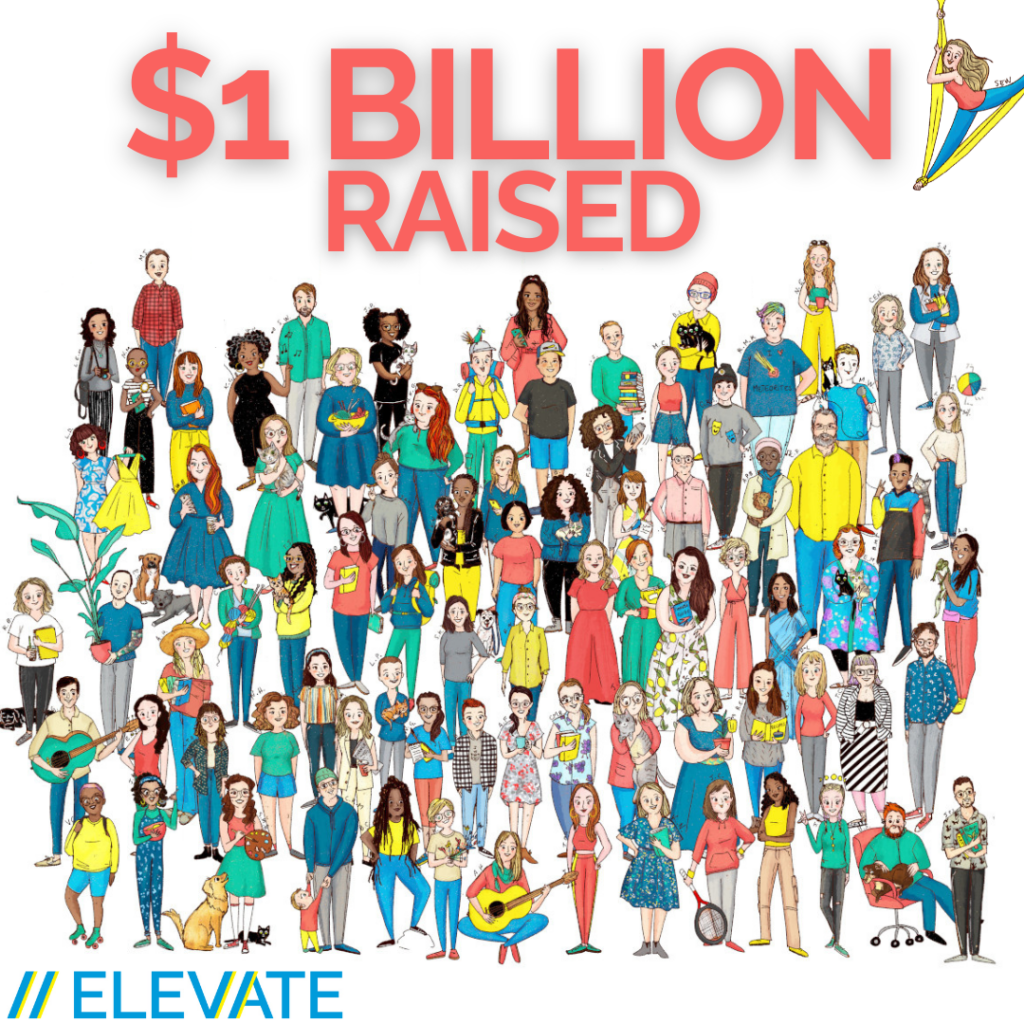A few months ago, we published a Q&A with April Walker of Philanthropy for the People, in which April provided her perspective on centering equity and inclusion in nonprofits, and the limitations of institutional philanthropy in the pursuit of equity. As promised, we are back with more ideas and strategies from April for our readers!
Centering equity and inclusion in any manner of organization is a long-term effort that requires financial resources and buy-in from both staff and leadership. Unfortunately, equity has become a co-opted term, and the work so jargonized, that it is often difficult to tell what efforts are substantive and which are performative.
For this reason, we bring you four practical tips for meaningfully centering equity in your nonprofit. We hope that these tips help you in navigating the complex yet essential process of resetting your organization’s culture with a focus on equity.
 Tip 1: Embrace Discomfort. April says: “You can’t gold star or checklist your way through [equity work]. You’re looking to exist in a very messy, uncomfortable space where you have to get comfortable not having the right answers and saying the wrong thing.”
Tip 1: Embrace Discomfort. April says: “You can’t gold star or checklist your way through [equity work]. You’re looking to exist in a very messy, uncomfortable space where you have to get comfortable not having the right answers and saying the wrong thing.”
Centering equity in your organization is not linear work. You will need to get used to engaging in uncomfortable conversations, grappling with hard truths about where your organization is falling short, and examining your biases, both explicit and implicit.
As Dr. Ella Washington, an organizational psychologist, explains, this work is about “making cultural changes, finding new ways to influence people, and making difficult decisions,” which requires an “intentional, nuanced approach.” It is impossible to change a culture, with all its systems, values, and traditions overnight, so be prepared to roll up your sleeves and embrace the uncertainty and challenge!
 Tip 2: Pay Employees a Living Wage. April says: “I urge people to ask, ‘What does our organizational budget look like with everybody at this organization earning a living wage? What does our budget look like with everybody at this organization having quality healthcare benefits? What does our budget look like with everybody having access to professional development?’”
Tip 2: Pay Employees a Living Wage. April says: “I urge people to ask, ‘What does our organizational budget look like with everybody at this organization earning a living wage? What does our budget look like with everybody at this organization having quality healthcare benefits? What does our budget look like with everybody having access to professional development?’”
A nonprofit’s most valuable resource is its staff—without their day-to-day efforts, it would be impossible to achieve any funded outputs or outcomes. Yet, workers in the nonprofit sector remain vastly undercompensated, and many of them identify as members of the most marginalized communities. Boards and funders have also enabled this disparity by focusing on the bottom-line of financials and failing to treat the people who do the work as part of the work itself. But this need not be the case! What if funders played a bigger role in helping nonprofits to better invest in the talent that drives them?
Some funders are starting to wake up to the implications of supporting nonprofits that undercompensate their staff. Dr. Adriane Johnson-Williams, a program officer at the Pyramid Peak Foundation, noted an inconsistency inherent in this approach to philanthropy:
I took it upon myself to tell agency heads I could not in good conscience support a budget that didn’t pay people appropriately, and I backed that up with funding recommendations to support those budgets . . . We would need far less philanthropy in Memphis if we had higher wages. In deciding which programs to fund, if I had taken their board-approved budgets as presented, I would reinforce an expectation that people working in the nonprofit sector deserve less. I would have co-signed the myth that work in the nonprofit sector feeds the soul, so it doesn’t have to feed or clothe or house the body.”
Likewise, nonprofit governance can play an important role in changing compensation practices. The Center for Progressive Reform is an example of a nonprofit that committed to a multi-step process to reach the goal of paying its staff more than a living wage. To do so certainly took advance planning and didn’t happen overnight. First they worked with their board to establish a contingency fund to augment salaries to mitigate inflation; they also upgraded benefits packages, and partnered with Living Wage for US to conduct an individual assessment and achieve certification.
Beyond pay, it is also imperative to provide equitable opportunities for professional development, as well as more intangible measures such as mentorship and networking for staff.
 Tip 3: Hold Leadership and Governance Accountable. April says: “Equity and inclusion also need to be baked into everyone’s performance evaluation, including the executive director’s and board members.”
Tip 3: Hold Leadership and Governance Accountable. April says: “Equity and inclusion also need to be baked into everyone’s performance evaluation, including the executive director’s and board members.”
We hold organizational leaders accountable for other job performance measures, so why should helping to shift workplace culture to advance equity be treated any differently? While we want to be careful not to equate progress with overly-simplified metrics, there are ways to thoughtfully gauge and measure progress over time. Doing so also reinforces the message that everyone at the organization is tasked with this work (see more on this point below).
Creating a culture of accountability in leadership and governance is key to sustaining momentum for long-range, deep-seated work. In the absence of such a culture, “any effort to prevent racial harm or provide proper redress when it occurs will fall short . . . and deepen distrust and disconnection among staff”; it can also impact employee retention and team performance.
 Tip 4: Avoid Tokenization. April says: “Everyone at the organization should be doing equity work so that they can figure out what being an active ally actually looks like.”
Tip 4: Avoid Tokenization. April says: “Everyone at the organization should be doing equity work so that they can figure out what being an active ally actually looks like.”
There are a number of reasons why an organization should ensure that everyone shares in the work of centering equity. First, this work involves transforming workplace culture—if large segments of your organization aren’t engaged, how can a true shift take place?
Additionally, those who experience the most inequity should not disproportionately bear the brunt of these endeavors, both for practical and fairness reasons. Often, the voices of those who are most marginalized are numerically underrepresented in the organization. It is also necessary for those who enjoy the most advantages to learn to leverage their influence to support their colleagues in effecting change. This allyship can take different forms – it does not always look like being front and center.
Finally, you might want to consider a team-based approach to equity work that convenes communities of practice for staff and board members from different organizations to engage in learning sessions, peer sharing, relationship building and coaching. Check out ProInsipre for more tips on this type of team-based model for building equity, as well as other helpful resources and training opportunities.
If your organization has embarked on an equity journey, we’d love to hear what you have learned through this important and challenging work!
Interested in learning more from organizations who have successfully implemented these tips? Stay tuned to this blog for further discussion in our Elevate Q&A series with nonprofits and funders, or join our email list to be the first to know when new content is published.
About the Author:

Grants Specialist & Content Creator










 Tip 1: Embrace Discomfort. April says: “You can’t gold star or checklist your way through [equity work]. You’re looking to exist in a very messy, uncomfortable space where you have to get comfortable not having the right answers and saying the wrong thing.”
Tip 1: Embrace Discomfort. April says: “You can’t gold star or checklist your way through [equity work]. You’re looking to exist in a very messy, uncomfortable space where you have to get comfortable not having the right answers and saying the wrong thing.” Tip 2: Pay Employees a Living Wage. April says: “I urge people to ask, ‘What does our organizational budget look like with everybody at this organization earning a living wage? What does our budget look like with everybody at this organization having quality healthcare benefits? What does our budget look like with everybody having access to professional development?’”
Tip 2: Pay Employees a Living Wage. April says: “I urge people to ask, ‘What does our organizational budget look like with everybody at this organization earning a living wage? What does our budget look like with everybody at this organization having quality healthcare benefits? What does our budget look like with everybody having access to professional development?’” Tip 3: Hold Leadership and Governance Accountable. April says: “Equity and inclusion also need to be baked into everyone’s performance evaluation, including the executive director’s and board members.”
Tip 3: Hold Leadership and Governance Accountable. April says: “Equity and inclusion also need to be baked into everyone’s performance evaluation, including the executive director’s and board members.” Tip 4: Avoid Tokenization. April says: “Everyone at the organization should be doing equity work so that they can figure out what being an active ally actually looks like.”
Tip 4: Avoid Tokenization. April says: “Everyone at the organization should be doing equity work so that they can figure out what being an active ally actually looks like.”





